SLOS447I September 2004 – May 2016 LMV341 , LMV342 , LMV344
PRODUCTION DATA.
- 1 Features
- 2 Applications
- 3 Description
- 4 Revision History
- 5 Pin Configuration and Functions
- 6 Specifications
- 7 Detailed Description
- 8 Application and Implementation
- 9 Power Supply Recommendations
- 10Layout
- 11Device and Documentation Support
- 12Mechanical, Packaging, and Orderable Information
封装选项
请参考 PDF 数据表获取器件具体的封装图。
机械数据 (封装 | 引脚)
- D|8
- DGK|8
散热焊盘机械数据 (封装 | 引脚)
订购信息
6 Specifications
6.1 Absolute Maximum Ratings
over operating free-air temperature range (unless otherwise noted)(1)| MIN | MAX | UNIT | ||||
|---|---|---|---|---|---|---|
| V+ | Supply voltage(2) | –0.3 | 5.5 | V | ||
| VID | Differential input voltage(3) | ±5.5 | V | |||
| VI | Input voltage (either input) | –0.3 | 5.5 | V | ||
| VO | Output voltage | –0.3 | VCC + 0.3 | V | ||
| TJ | Operating virtual junction temperature | 150 | °C | |||
| Tstg | Storage temperature | –65 | 150 | °C | ||
(1) Stresses beyond those listed under Absolute Maximum Ratings may cause permanent damage to the device. These are stress ratings only, which do not imply functional operation of the device at these or any other conditions beyond those indicated under Recommended Operating Conditions. Exposure to absolute-maximum-rated conditions for extended periods may affect device reliability.
(2) All voltage values (except differential voltages) are with respect to the network GND.
(3) Differential voltages are at IN+ with respect to IN−.
6.2 ESD Ratings
| VALUE | UNIT | |||
|---|---|---|---|---|
| V(ESD) | Electrostatic discharge | Human-body model (HBM), per ANSI/ESDA/JEDEC JS-001(1) | ±2000 | V |
| Charged-device model (CDM), per JEDEC specification JESD22-C101(2) | ±750 | |||
(1) JEDEC document JEP155 states that 500-V HBM allows safe manufacturing with a standard ESD control process.
(2) JEDEC document JEP157 states that 250-V CDM allows safe manufacturing with a standard ESD control process.
6.3 Recommended Operating Conditions
| MIN | MAX | UNIT | ||
|---|---|---|---|---|
| V+ | Supply voltage (single-supply operation) | 2.5 | 5.5 | V |
| TA | Operating free-air temperature | –40 | 125 | °C |
6.4 Thermal Information
| THERMAL METRIC(1) | LMV342 | LMV344 | LMV341 | LMV342 | LMV344 | UNIT | ||
|---|---|---|---|---|---|---|---|---|
| D (SOIC) | DBV (SOT-23) |
DCK (SC70) | DGK (VSSOP) | PW (TSSOP) | ||||
| 8 PINS | 14 PINS | 6 PINS | 6 PINS | 8 PINS | 14 PINS | |||
| RθJA | Junction-to-ambient thermal resistance(2) (3) | 123.9 | 88.7 | 193.4 | 196.8 | 192.3 | 118 | °C/W |
| RθJC(top) | Junction-to-case (top) thermal resistance | 70.2 | 49 | 145.6 | 82.4 | 78.2 | 46.9 | °C/W |
| RθJB | Junction-to-board thermal resistance | 64.1 | 43 | 44.1 | 95.2 | 112.6 | 59.7 | °C/W |
| ψJT | Junction-to-top characterization parameter | 25 | 16.9 | 34.1 | 1.8 | 15.2 | 5.1 | °C/W |
| ψJB | Junction-to-board characterization parameter | 63.6 | 42.7 | 43.4 | 93.2 | 111.2 | 59.1 | °C/W |
(1) For more information about traditional and new thermal metrics, see the Semiconductor and IC Package Thermal Metrics application report, SPRA953.
(2) Maximum power dissipation is a function of TJ(max), RθJA, and TA. The maximum allowable power dissipation at any allowable ambient temperature is PD = (TJ(max) – TA)/RθJA. Operating at the absolute maximum TJ of 150°C can affect reliability.
(3) The package thermal impedance is calculated in accordance with JESD 51-7.
6.5 Electrical Characteristics: V+ = 2.7 V
V+ = 2.7 V, GND = 0 V, VIC = VO = V+/2, RL > 1 MΩ (unless otherwise noted)| PARAMETER | TEST CONDITIONS | TA | MIN | TYP(1) | MAX | UNIT | ||
|---|---|---|---|---|---|---|---|---|
| VIO | Input offset voltage | 25°C | 0.25 | 4 | mV | |||
| Full range | 4.5 | |||||||
| αVIO | Average temperature coefficient of input offset voltage | Full range | 1.7 | μV/°C | ||||
| IIB | Input bias current | 25°C | 1 | 120 | pA | |||
| –40°C to 85°C | 250 | |||||||
| –40°C to 125°C | 3 | nA | ||||||
| IIO | Input offset current | 25°C | 6.6 | fA | ||||
| CMRR | Common-mode rejection ratio | 0 ≤ VICR ≤ 1.7 V | 25°C | 56 | 80 | dB | ||
| 0 ≤ VICR ≤ 1.6 V | Full range | 50 | ||||||
| kSVR | Supply-voltage rejection ratio | 2.7 V ≤ V+ ≤ 5 V | 25°C | 65 | 82 | dB | ||
| Full range | 60 | |||||||
| VICR | Common-mode input voltage range | Lower range, CMRR ≥ 50 dB | 25°C | –0.2 | 0 | V | ||
| Upper range, CMRR ≥ 50 dB | 25°C | 1.7 | 1.9 | |||||
| AV | Large-signal voltage gain(2) | RL = 10 kΩ to 1.35 V | 25°C | 78 | 113 | dB | ||
| Full range | 70 | |||||||
| RL = 2 kΩ to 1.35 V | 25°C | 72 | 103 | |||||
| Full range | 64 | |||||||
| VO | Output swing (delta from supply rails) |
RL = 2 kΩ to 1.35 V | Low level | 25°C | 24 | 60 | mV | |
| Full range | 95 | |||||||
| High level | 25°C | 26 | 60 | |||||
| Full range | 95 | |||||||
| RL = 10 kΩ to 1.35 V | Low level | 25°C | 5 | 30 | ||||
| Full range | 40 | |||||||
| High level | 25°C | 5.3 | 30 | |||||
| Full range | 40 | |||||||
| ICC | Supply current (per channel) | 25°C | 100 | 170 | μA | |||
| Full range | 230 | |||||||
| IOS | Output short-circuit current | Sourcing | LMV341, LMV342 | 25°C | 20 | 32 | mA | |
| LMV344 | 18 | 24 | ||||||
| Sinking | 15 | 24 | ||||||
| SR | Slew rate | RL = 10 kΩ(3) | 25°C | 1 | V/μs | |||
| GBM | Unity-gain bandwidth | RL = 10 kΩ, CL = 200 pF | 25°C | 1 | MHz | |||
| Φm | Phase margin | RL = 100 kΩ | 25°C | 72 | ° | |||
| Gm | Gain margin | RL = 100 kΩ | 25°C | 20 | dB | |||
| Vn | Equivalent input noise voltage | f = 1 kHz | 25°C | 40 | nV/√Hz | |||
| In | Equivalent input noise current | f = 1 kHz | 25°C | 0.001 | pA/√Hz | |||
| THD | Total harmonic distortion | f = 1 kHz, AV = 1, RL = 600 Ω, VI = 1 VPP |
25°C | 0.017% | ||||
(1) Typical values represent the most likely parametric norm.
(2) GND + 0.2 V ≤ VO ≤ V+ – 0.2 V
(3) Connected as voltage follower with 2-VPP step input. Number specified is the slower of the positive and negative slew rates.
6.6 Electrical Characteristics: V+ = 5 V
V+ = 5 V, GND = 0 V, VIC = VO = V+/2, RL > 1 MΩ (unless otherwise noted)| PARAMETER | TEST CONDITIONS | TA | MIN | TYP(1) | MAX | UNIT | ||
|---|---|---|---|---|---|---|---|---|
| VIO | Input offset voltage | 25°C | 0.25 | 4 | mV | |||
| Full range | 4.5 | |||||||
| αVIO | Average temperature coefficient of input offset voltage | Full range | 1.9 | μV/°C | ||||
| IIB | Input bias current | 25°C | 1 | 200 | pA | |||
| –40°C to 85°C | 375 | |||||||
| –40°C to 125°C | 5 | nA | ||||||
| IIO | Input offset current | 25°C | 6.6 | fA | ||||
| CMRR | Common-mode rejection ratio | 0 ≤ VICR ≤ 4 V | 25°C | 56 | 86 | dB | ||
| 0 ≤ VICR ≤ 3.9 V | Full range | 50 | ||||||
| kSVR | Supply-voltage rejection ratio | 2.7 V ≤ V+ ≤ 5 V | 25°C | 65 | 82 | dB | ||
| Full range | 60 | |||||||
| VICR | Common-mode input voltage range |
Lower range, CMRR ≥ 50 dB | 25°C | –0.2 | 0 | V | ||
| Upper range, CMRR ≥ 50 dB | 25°C | 4 | 4.2 | |||||
| AV | Large-signal voltage gain(2) | RL = 10 kΩ to 2.5 V | 25°C | 78 | 116 | dB | ||
| Full range | 70 | |||||||
| RL = 2 kΩ to 2.5 V | 25°C | 72 | 107 | |||||
| Full range | 64 | |||||||
| VO | Output swing (delta from supply rails) |
RL = 2 kΩ to 2.5 V | Low level | 25°C | 32 | 60 | mV | |
| Full range | 95 | |||||||
| High level | 25°C | 34 | 60 | |||||
| Full range | 95 | |||||||
| RL = 10 kΩ to 2.5 V | Low level | 25°C | 7 | 30 | ||||
| Full range | 40 | |||||||
| High level | 25°C | 7 | 30 | |||||
| Full range | 40 | |||||||
| ICC | Supply current (per channel) | 25°C | 107 | 200 | μA | |||
| Full range | 260 | |||||||
| IOS | Output short-circuit current | Sourcing | LMV341, LMV342 | 25°C | 85 | 113 | mA | |
| LMV344 | 85 | 113 | ||||||
| Sinking | 50 | 75 | ||||||
| SR | Slew rate | RL = 10 kΩ(3) | 25°C | 1 | V/μs | |||
| GBM | Unity-gain bandwidth | RL = 10 kΩ, CL = 200 pF | 25°C | 1 | MHz | |||
| Φm | Phase margin | RL = 100 kΩ | 25°C | 70 | ° | |||
| Gm | Gain margin | RL = 100 kΩ | 25°C | 20 | dB | |||
| Vn | Equivalent input noise voltage | f = 1 kHz | 25°C | 39 | nV/√Hz | |||
| In | Equivalent input noise current | f = 1 kHz | 25°C | 0.001 | pA/√Hz | |||
| THD | Total harmonic distortion | f = 1 kHz, AV = 1, RL = 600 Ω, VI = 1 VPP |
25°C | 0.012% | ||||
(1) Typical values represent the most likely parametric norm.
(2) GND + 0.2 V ≤ VO ≤ V+ – 0.2 V
(3) Connected as voltage follower with 2-VPP step input. Number specified is the slower of the positive and negative slew rates.
6.7 Shutdown Characteristics: V+ = 2.7 V
V+ = 2.7 V, GND = 0 V, VIC = VO = V+/2, RL > 1 MΩ (unless otherwise noted)| PARAMETER | TEST CONDITIONS | TA | MIN | TYP | MAX | UNIT | ||
|---|---|---|---|---|---|---|---|---|
| ICC(SHDN) | Supply current in shutdown mode | VSD = 0 V | 25°C | 0.045 | 1000 | nA | ||
| Full range | 1.5 | μA | ||||||
| t(on) | Amplifier turnon time | 25°C | 5 | μs | ||||
| VSD | Recommended shutdown pin voltage range | ON mode | 25°C | 2.4 | 2.7 | V | ||
| Shutdown mode | 0 | 0.8 | ||||||
6.8 Shutdown Characteristics: V+ = 5 V
V+ = 5 V, GND = 0 V, VIC = VO = V+/2, RL > 1 MΩ (unless otherwise noted)| PARAMETER | TEST CONDITIONS | TA | MIN | TYP | MAX | UNIT | ||
|---|---|---|---|---|---|---|---|---|
| ICC(SHDN) | Supply current in shutdown mode | VSD = 0 V | 25°C | 0.033 | 1 | μA | ||
| Full range | 1.5 | |||||||
| t(on) | Amplifier turnon time | 25°C | 5 | μs | ||||
| VSD | Recommended shutdown pin voltage range | ON mode | 25°C | 4.5 | 5 | V | ||
| Shutdown mode | 0 | 0.8 | ||||||
6.9 Typical Characteristics
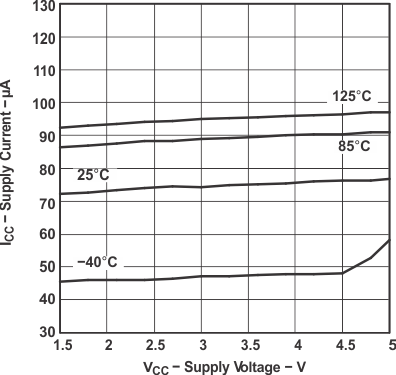 Figure 1. Supply Current vs Supply Voltage
Figure 1. Supply Current vs Supply Voltage
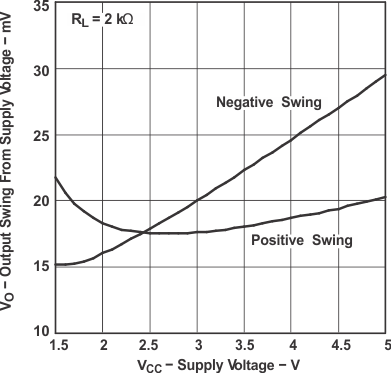 Figure 3. Output Voltage Swing vs Supply Voltage
Figure 3. Output Voltage Swing vs Supply Voltage
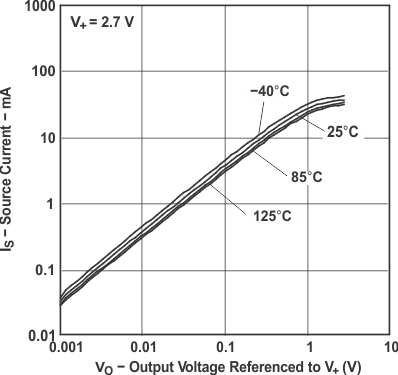 Figure 5. Source Current vs Output Voltage
Figure 5. Source Current vs Output Voltage
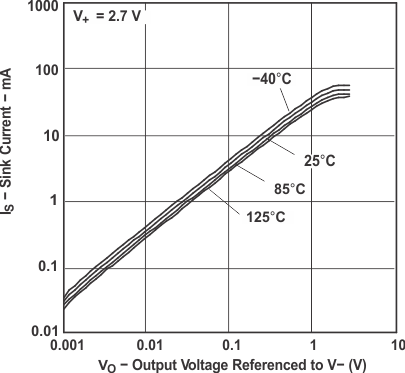 Figure 7. Sink Current vs Output Voltage
Figure 7. Sink Current vs Output Voltage
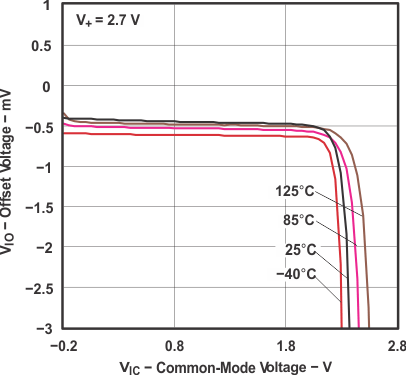 Figure 9. Offset Voltage vs Common-Mode Voltage
Figure 9. Offset Voltage vs Common-Mode Voltage
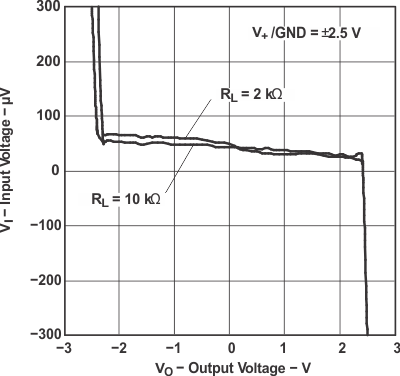 Figure 11. Input Voltage vs Output Voltage
Figure 11. Input Voltage vs Output Voltage
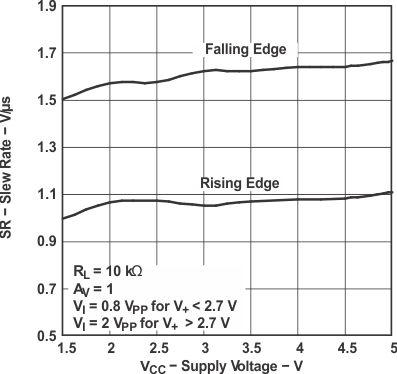 Figure 13. Slew Rate vs Supply Voltage
Figure 13. Slew Rate vs Supply Voltage
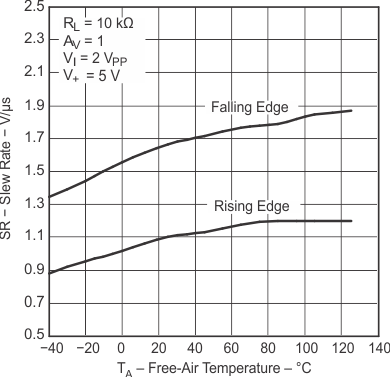 Figure 15. Slew Rate vs Temperature
Figure 15. Slew Rate vs Temperature
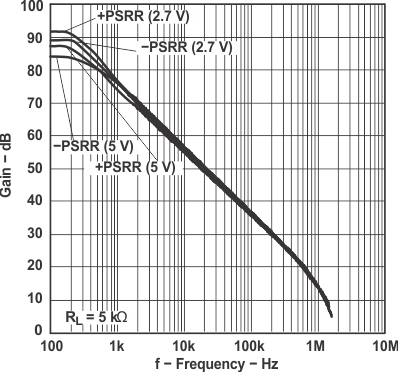 Figure 17. PSRR vs Frequency
Figure 17. PSRR vs Frequency
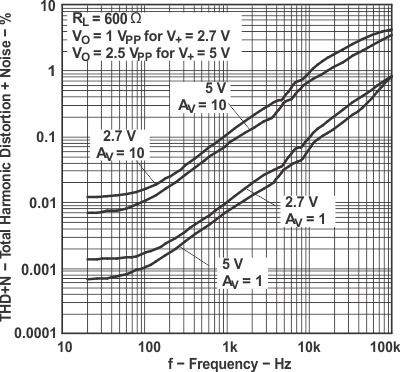 Figure 19. Total Harmonic Distortion + Noise vs Frequency
Figure 19. Total Harmonic Distortion + Noise vs Frequency

(TA = –40°C, 25°C, 125°C)
Figure 21. Gain and Phase Margin vs Frequency
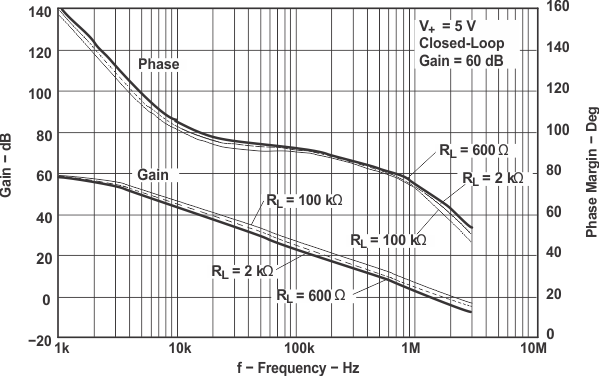
(RL = 600 Ω, 2 kΩ, 100 kΩ)
Figure 23. Gain and Phase Margin vs Frequency
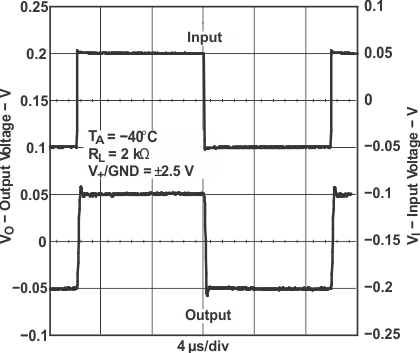 Figure 25. Small-Signal Noninverting Response
Figure 25. Small-Signal Noninverting Response
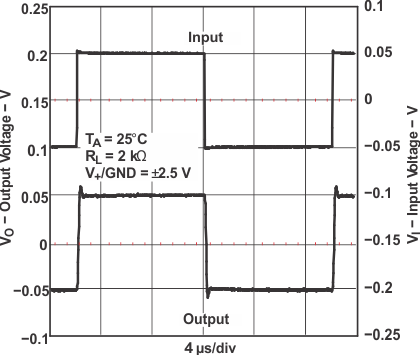 Figure 27. Small-Signal Noninverting Response
Figure 27. Small-Signal Noninverting Response
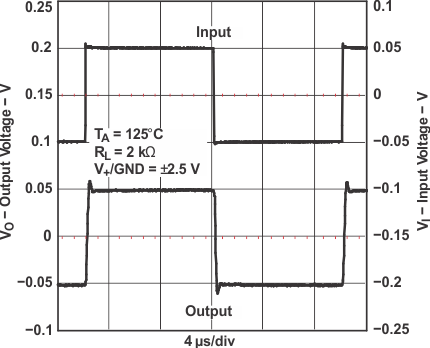 Figure 29. Small-Signal Noninverting Response
Figure 29. Small-Signal Noninverting Response
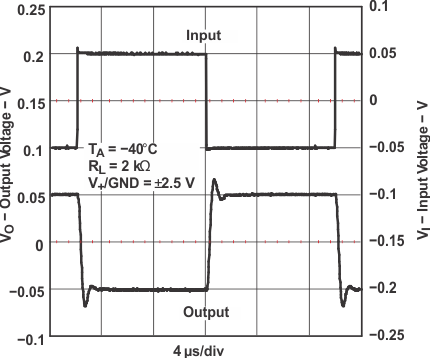 Figure 31. Small-Signal Inverting Response
Figure 31. Small-Signal Inverting Response
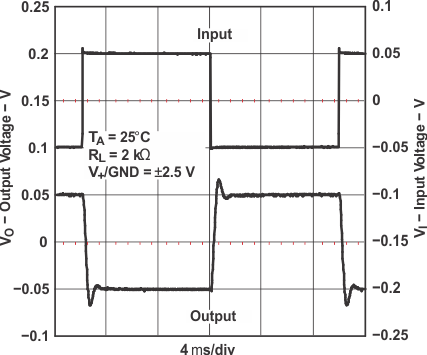 Figure 33. Small-Signal Inverting Response
Figure 33. Small-Signal Inverting Response
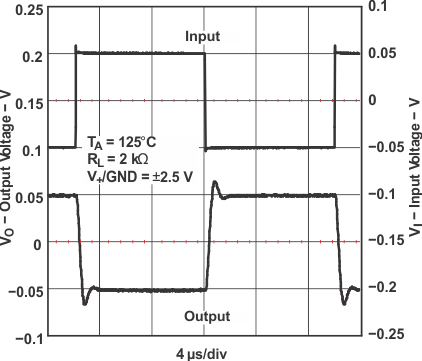 Figure 35. Small-Signal Inverting Response
Figure 35. Small-Signal Inverting Response
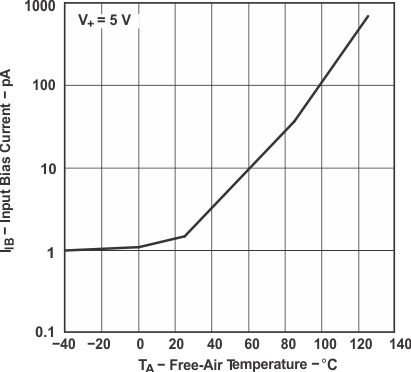 Figure 2. Input Bias Current vs Temperature
Figure 2. Input Bias Current vs Temperature
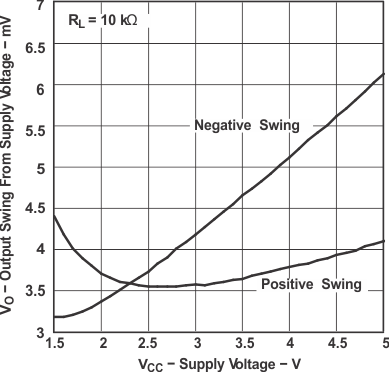 Figure 4. Output Voltage Swing vs Supply Voltage
Figure 4. Output Voltage Swing vs Supply Voltage
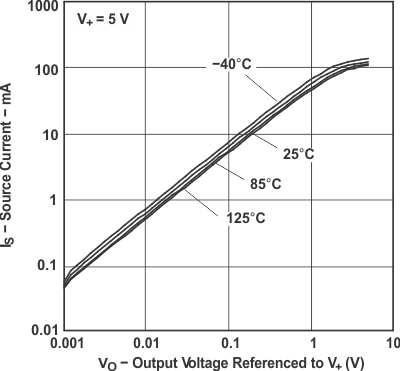 Figure 6. Source Current vs Output Voltage
Figure 6. Source Current vs Output Voltage
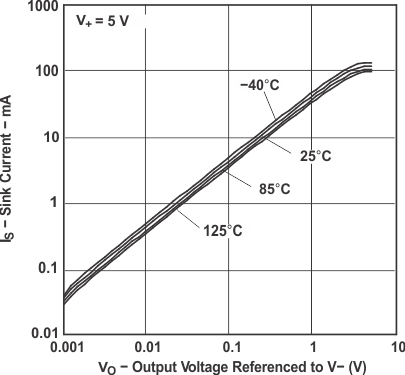 Figure 8. Sink Current vs Output Voltage
Figure 8. Sink Current vs Output Voltage
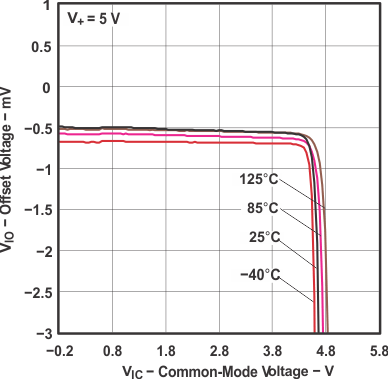 Figure 10. Offset Voltage vs Common-Mode Voltage
Figure 10. Offset Voltage vs Common-Mode Voltage
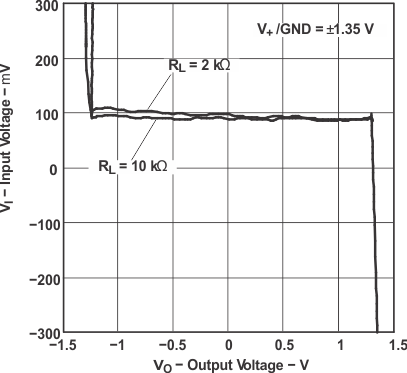 Figure 12. Input Voltage vs Output Voltage
Figure 12. Input Voltage vs Output Voltage
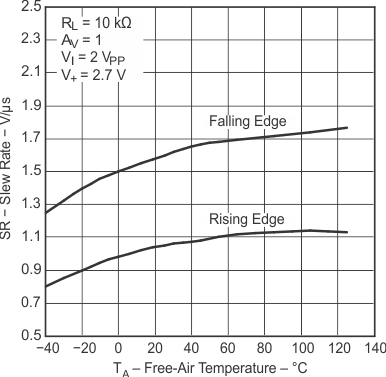 Figure 14. Slew Rate vs Temperature
Figure 14. Slew Rate vs Temperature
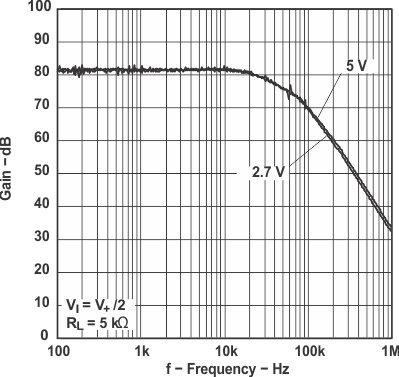 Figure 16. CMRR vs Frequency
Figure 16. CMRR vs Frequency
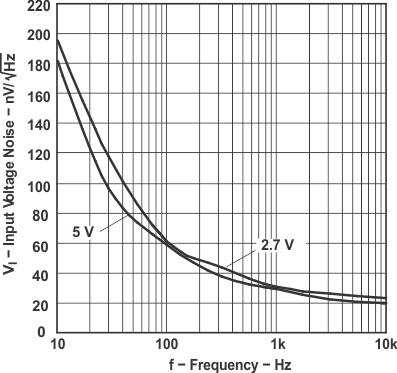 Figure 18. Input Voltage Noise vs Frequency
Figure 18. Input Voltage Noise vs Frequency
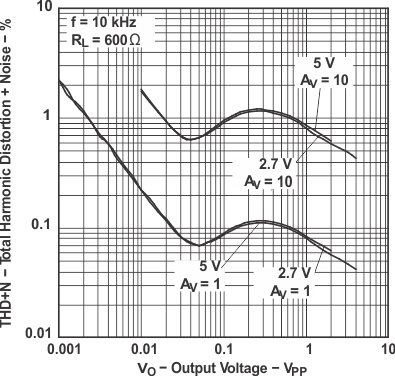 Figure 20. Total Harmonic Distortion + Noise vs Output Voltage
Figure 20. Total Harmonic Distortion + Noise vs Output Voltage
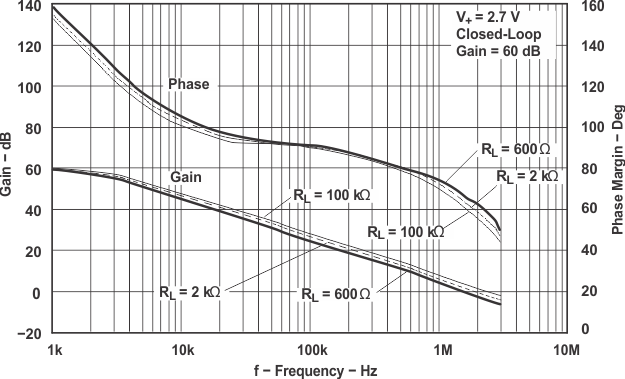
(RL = 600 Ω, 2 kΩ, 100 kΩ)
Figure 22. Gain and Phase Margin vs Frequency
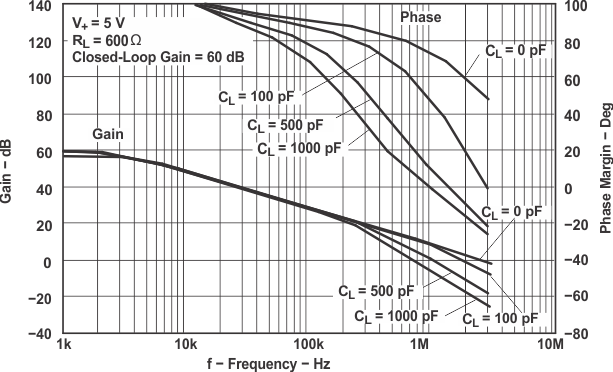
(CL = 0 pF, 100 pF, 500 pF, 1000 pF)
Figure 24. Gain and Phase Margin vs Frequency
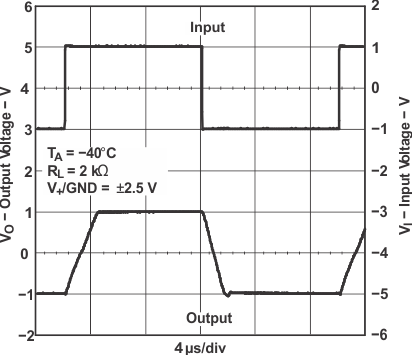 Figure 26. Large-Signal Noninverting Response
Figure 26. Large-Signal Noninverting Response
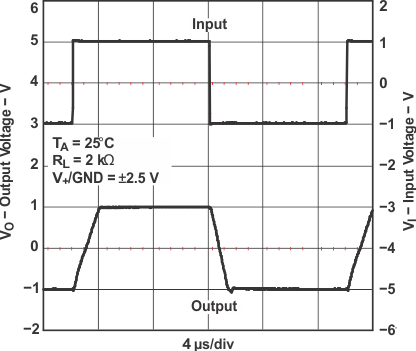 Figure 28. Large-Signal Noninverting Response
Figure 28. Large-Signal Noninverting Response
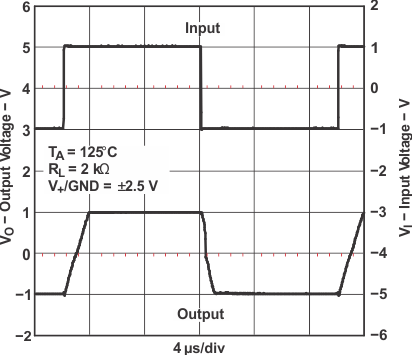 Figure 30. Large-Signal Noninverting Response
Figure 30. Large-Signal Noninverting Response
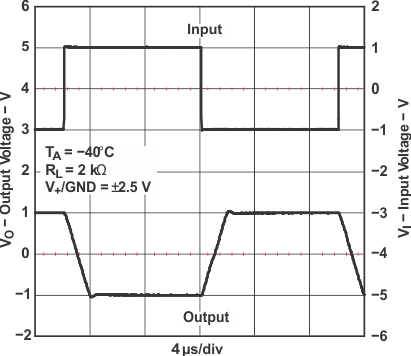 Figure 32. Large-Signal Inverting Response
Figure 32. Large-Signal Inverting Response
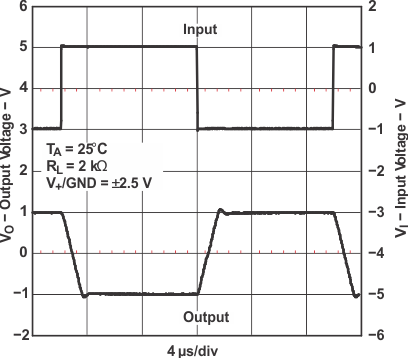 Figure 34. Large-Signal Inverting Response
Figure 34. Large-Signal Inverting Response
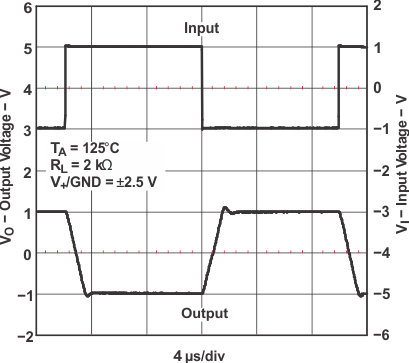 Figure 36. Large-Signal Inverting Response
Figure 36. Large-Signal Inverting Response